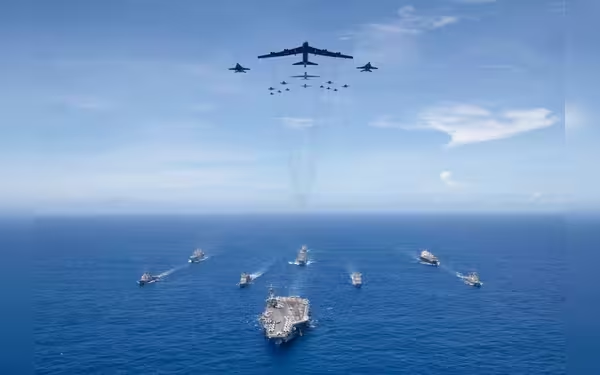Saturday, November 16, 2024 11:28 PM
US Navy's Project 33: Preparing for Conflict with China by 2027
- Project 33 aims to enhance US Navy readiness by 2027.
- Focus on AI, robotics, and multi-domain operations.
- China's naval power poses significant challenges to US.
 Image Credits: asiatimes
Image Credits: asiatimesUS Navy's Project 33 aims to enhance readiness against China by 2027, focusing on AI and robotics amid rising global tensions.
The United States Navy is currently on a mission to enhance its capabilities and readiness in anticipation of a possible conflict with China, particularly concerning Taiwan, by the year 2027. This initiative, known as "Project 33," is spearheaded by Chief of Naval Operations Admiral Lisa Franchetti. The plan aims to address several pressing issues, including maintenance backlogs and recruitment challenges, while focusing on improving the Navy's overall readiness, capability, and capacity.
"Project 33" outlines two main objectives: to boost naval readiness and to strengthen the US Navy's role within the broader framework of US joint warfighting. The plan identifies seven critical areas that require attention. These include tackling maintenance backlogs, scaling up robotic and autonomous systems, enhancing sailor recruitment and retention, and improving infrastructure. The emphasis on multi-domain operations and technological innovation is crucial, especially in light of the increasing global threats posed by China's expanding military capabilities and Russia's aggressive actions.
One of the key aspects of this initiative is the integration of advancements in artificial intelligence (AI), robotics, and distributed maritime operations. The US Navy aims to maintain its superiority through improved readiness, joint force integration, and warfighter competency. The urgency of executing these initiatives cannot be overstated, as they are essential for preparing the Navy for sustained, high-end combat scenarios.
However, as the US Navy accelerates its efforts to counter China's growing naval power, it faces significant challenges. The stark reality is that the US is lagging in shipbuilding capacity and is dealing with outdated kill chains, which could expose critical vulnerabilities in a potential conflict. The situation is further complicated by the fact that China now boasts the world's largest navy, with 370 ships and submarines, including over 140 major surface combatants. China's naval shipyards have more capacity than all seven US naval shipyards combined, highlighting a growing disadvantage for the United States in naval shipbuilding.
While "Project 33" represents a proactive approach by the US Navy to prepare for future challenges, it also underscores the urgent need for the United States to address its shipbuilding capacity and modernize its naval forces. As global tensions rise, particularly in the Asia-Pacific region, the effectiveness of these initiatives will be crucial in ensuring that the US Navy remains a formidable force on the world stage. The outcome of these efforts will not only impact military strategy but also the broader geopolitical landscape, making it imperative for the US to act swiftly and decisively.













